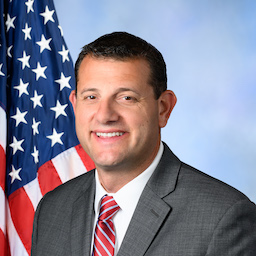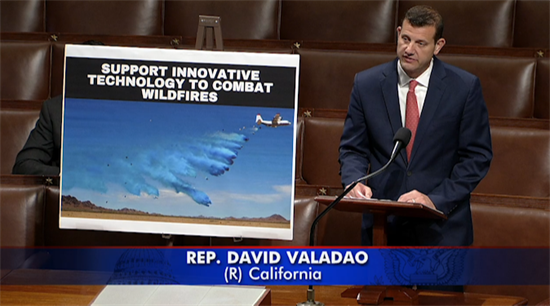- Home
- About
-
Services
- Art Competition
- Community Project Funding Map
- Congressional App Contest
- Congressional Certificate
- Event Request
- Flag Request
- Grants
- Grant Letters of Support
- Help with a Federal Agency
- Inauguration
- Internships
- Kids Page
- Meeting Request
- Service Academy Nominations
- Tour Requests
- Vietnam Veteran Commemoration
- Government Shutdown FAQ
- Issues
- Media
- Contact

Press Releases
Congressman Valadao’s Bill to Combat Wildfires Passes the House with Bipartisan Support
Washington,
September 12, 2023
|
Faith Mabry
The House of Representatives passed Congressman David G. Valadao's (CA-22) bill, the Emergency Wildfire Fighting Technology Act. This bipartisan legislation would dramatically increase the number of available assets for wildfire emergencies by updating deployment protocols for Containerized Aerial Fire Fighting Systems (CAFFS).
WASHINGTON – Today, the House of Representatives passed Congressman David G. Valadao's (CA-22) bill, the Emergency Wildfire Fighting Technology Act. This bipartisan legislation would dramatically increase the number of available assets for wildfire emergencies by updating deployment protocols for Containerized Aerial Fire Fighting Systems (CAFFS). “Today, my colleagues and I took an important step towards combatting California’s devastating wildfires that have destroyed homes, businesses, and livelihoods across our state. The Emergency Wildfire Fighting Technology Act will ensure our firefighters have every tool available to them to combat these deadly fires and protect our communities,” said Congressman Valadao. “I want to thank Chairman Bruce Westerman and all my colleagues for their support on this critical issue.” “The passage of H.R. 3389 is an essential step in our continued efforts to address our nation's wildfire crisis. America’s firefighters bravely risk their lives to fight these devastating blazes year after year, and it’s imperative that we equip them with all the necessary tools. H.R. 3389 requires the administration to do its job of seeking new, innovative solutions to suppress forest fires. Representative Valadao has been a leader in addressing this crisis and I want to congratulate him for the passage of his bipartisan bill. I hope to see it moved through the legislative process quickly and signed into law,” said House Natural Resources Committee Chairman Bruce Westerman. The Emergency Wildfire Fighting Technology Act:
Read the full text of the bill here. Prior to the vote, Congressman Valadao spoke on the House floor to urge passage of the bill. You can watch his full remarks here or read them belowRemarks as Prepared: I rise today to urge my colleagues to support my bill that will help combat severe wildfires and save lives. My home state of California has become all too familiar with devastating wildfires. In 2022, just over 20,000 wildfires burned approximately 5.8 million acres across the Western United States. These numbers represent people’s homes, businesses, and livelihoods that have been destroyed, or tragically lost. In my district, we deal with prolonged exposure to wildfire smoke, which settles in the central valley and results in some of the nation’s worst air quality. As these wildfires become more aggressive, we need to take concrete steps to combat wildfires, while also focusing on improving the long-term management of our forests. The bill that we’re considering today will help deploy new technologies to combat the widespread damage these fires cause to our communities, our health, and our environment. The Wildfire Fighting Technology Act would dramatically increase the number of airlift assets available for wildfire emergencies. We should be using every tool available to fight these fires. Containerized Aerial Firefighting Systems, or CAFFS, are airdrop-capable disposable containers for water or fire retardant, which can be dropped from much higher altitudes and with less visibility. Current aerial firefighting operations depend on single-mission aircraft, but CAFFs can be used by any standard cargo plane. The use of CAFFS provides more coverage for firefighters on the ground and allows teams to quickly respond to prevent smaller fires from becoming uncontrollable. These systems are being used in other countries, but not here in the U.S. We have a technology that we can and should use to stop the devastation these fires cause. The dangers and long-term impacts of wildfires are clear. I urge all of my colleagues to support the passage of the Emergency Wildfire Fighting Technology Act to combat and contain these fires in a quicker, more efficient way. Thank you and I yield back.### |

